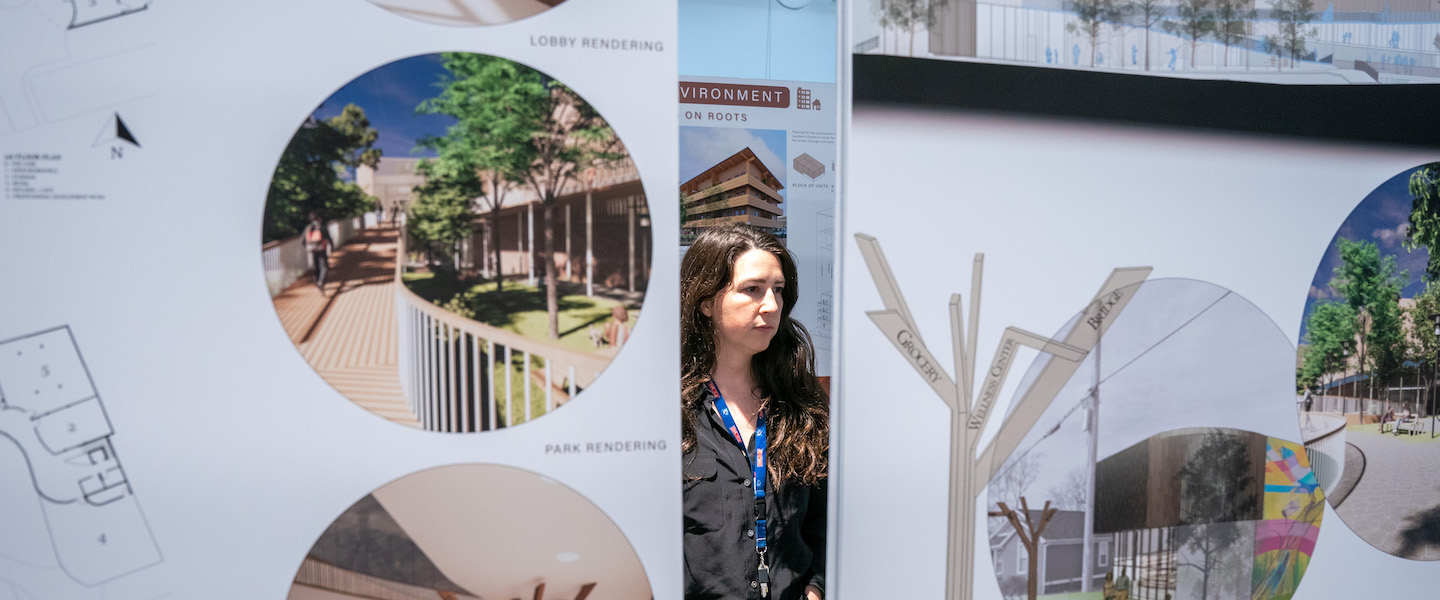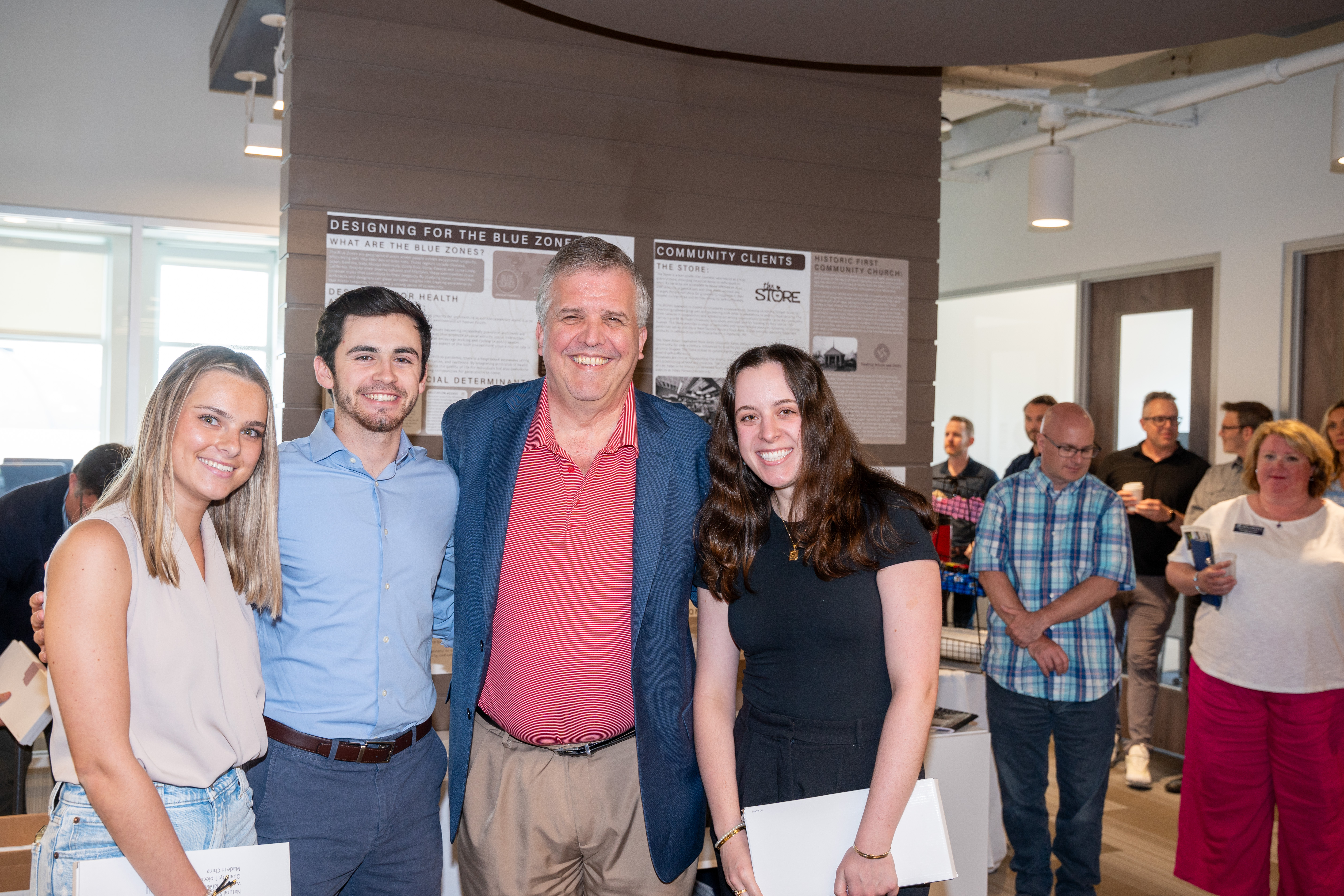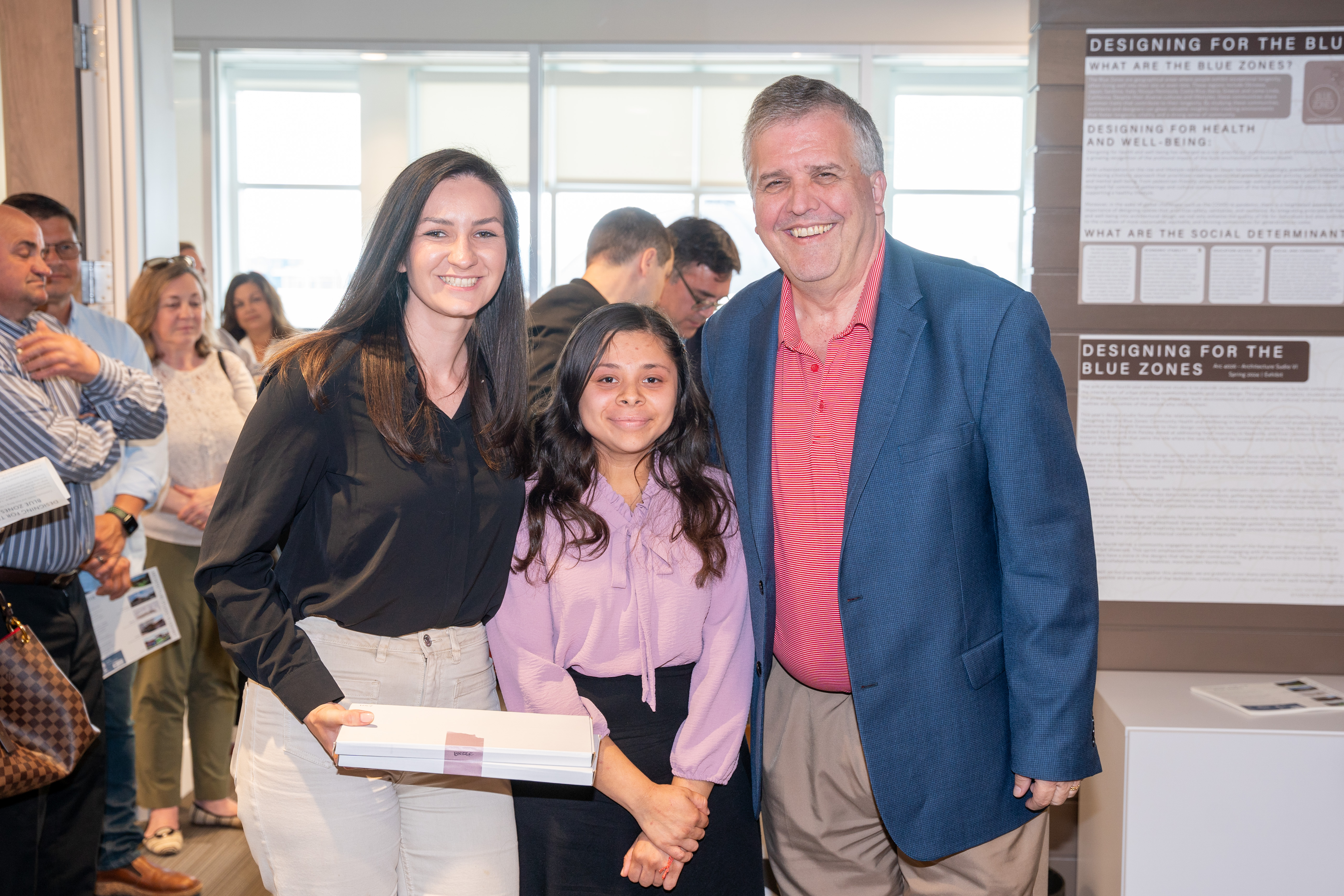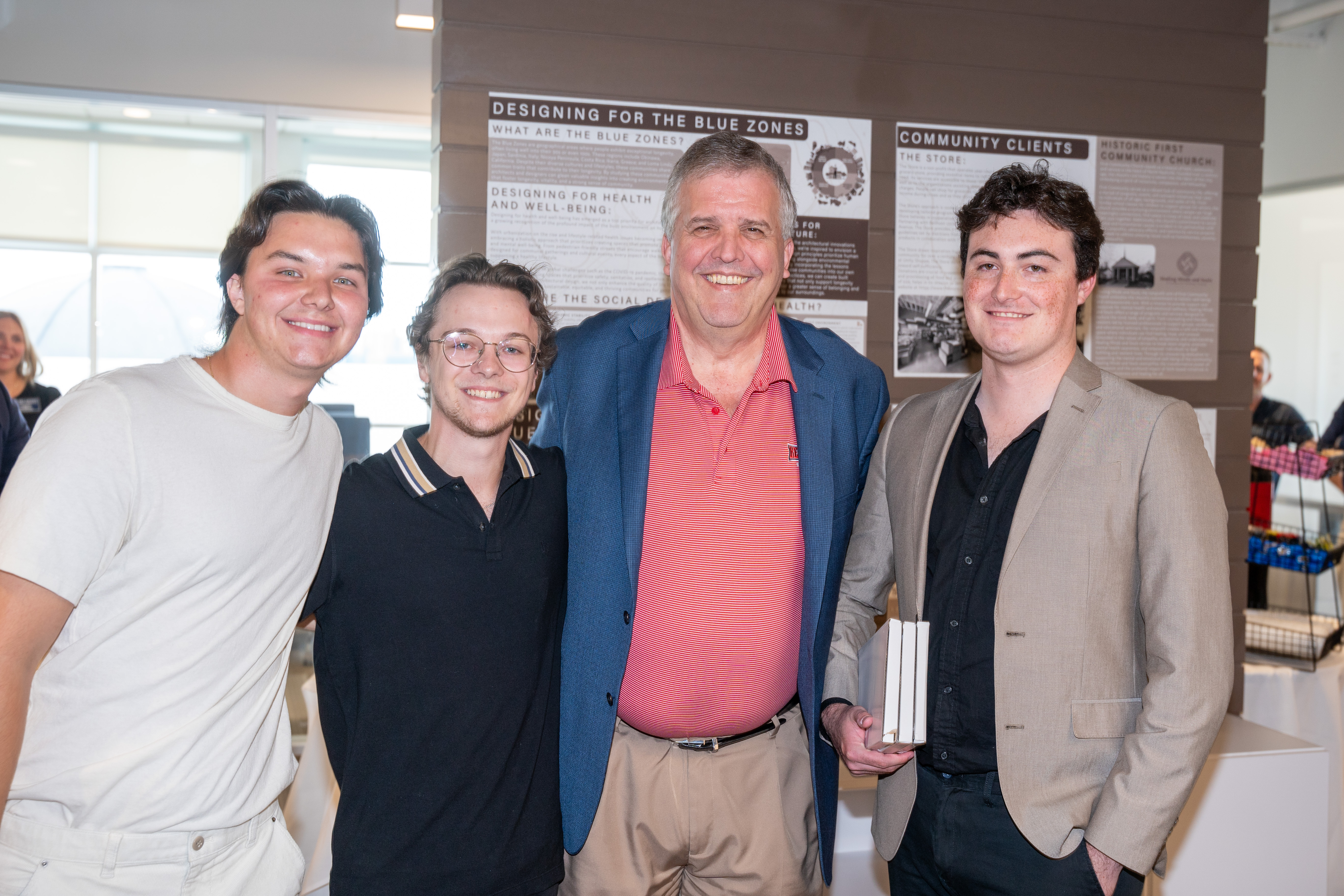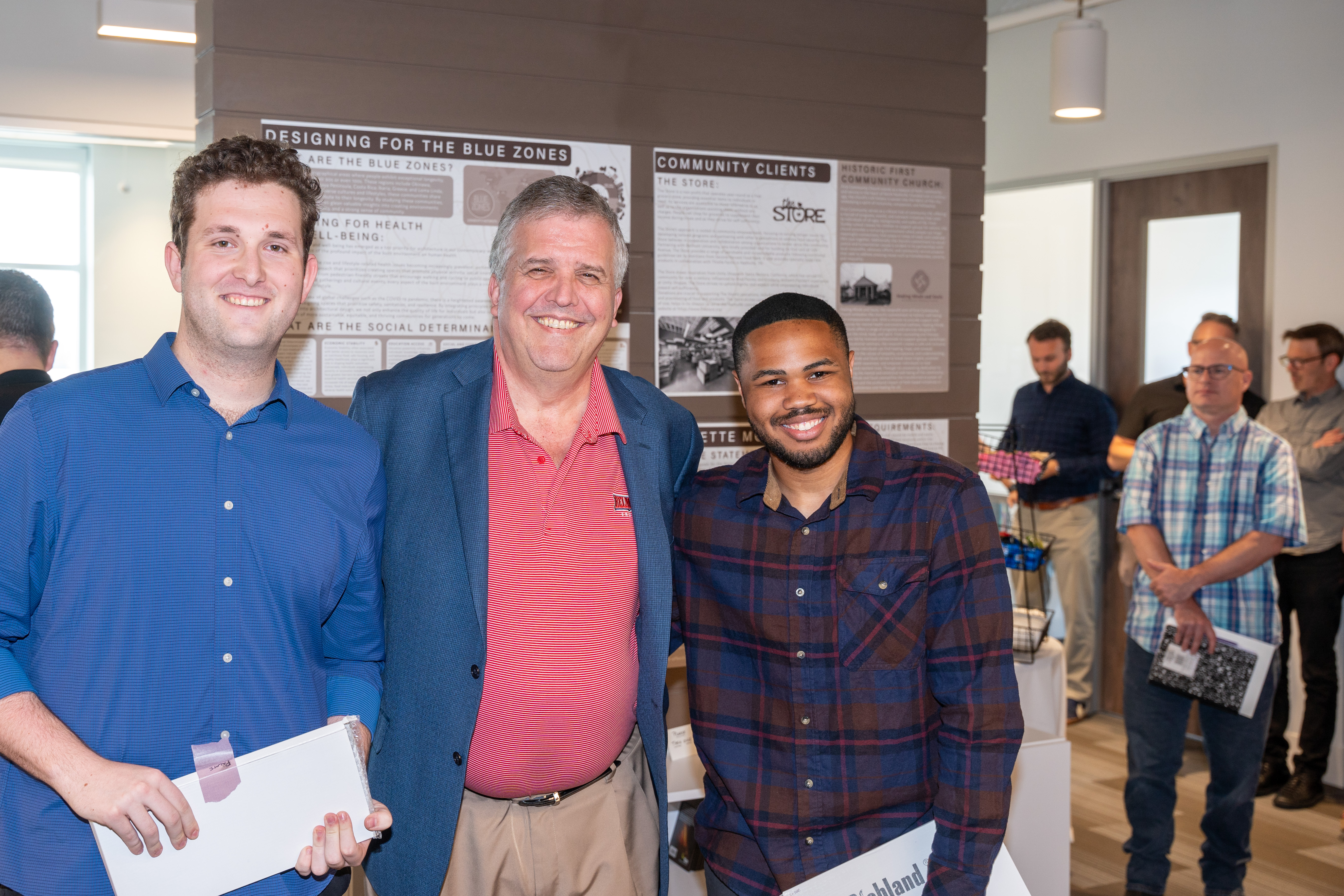Over the spring semester, 4th year architecture students in the O’More College of Architecture and Design’s Studio VI course investigated how architecture and urban planning can enhance an environment and population.
an environment and population.
The course, themed “Designing for the Blue Zones: Community Health and Wellbeing in North Nashville,” was co-led by Dr. Josh Yates, executive director of the Belmont Innovation Labs, and Dr. Fernando Lima, assistant professor of architecture and director of digital fabrication at O’More.
In January, students got their creative juices flowing with a one-day design intensive in collaboration with the American Institute of Architects Middle TN’s Academy of Architecture for Health. From there, they were split into new groups to spend the following months finding design-based solutions that could shift North Nashville into becoming a blue zone (an area where the population tends to live longer and healthier lives than the global average.)
Each group adopted a separate social determinant of health (health and healthcare, economic stability, education access, built environment and social and community) as their primary design lens.
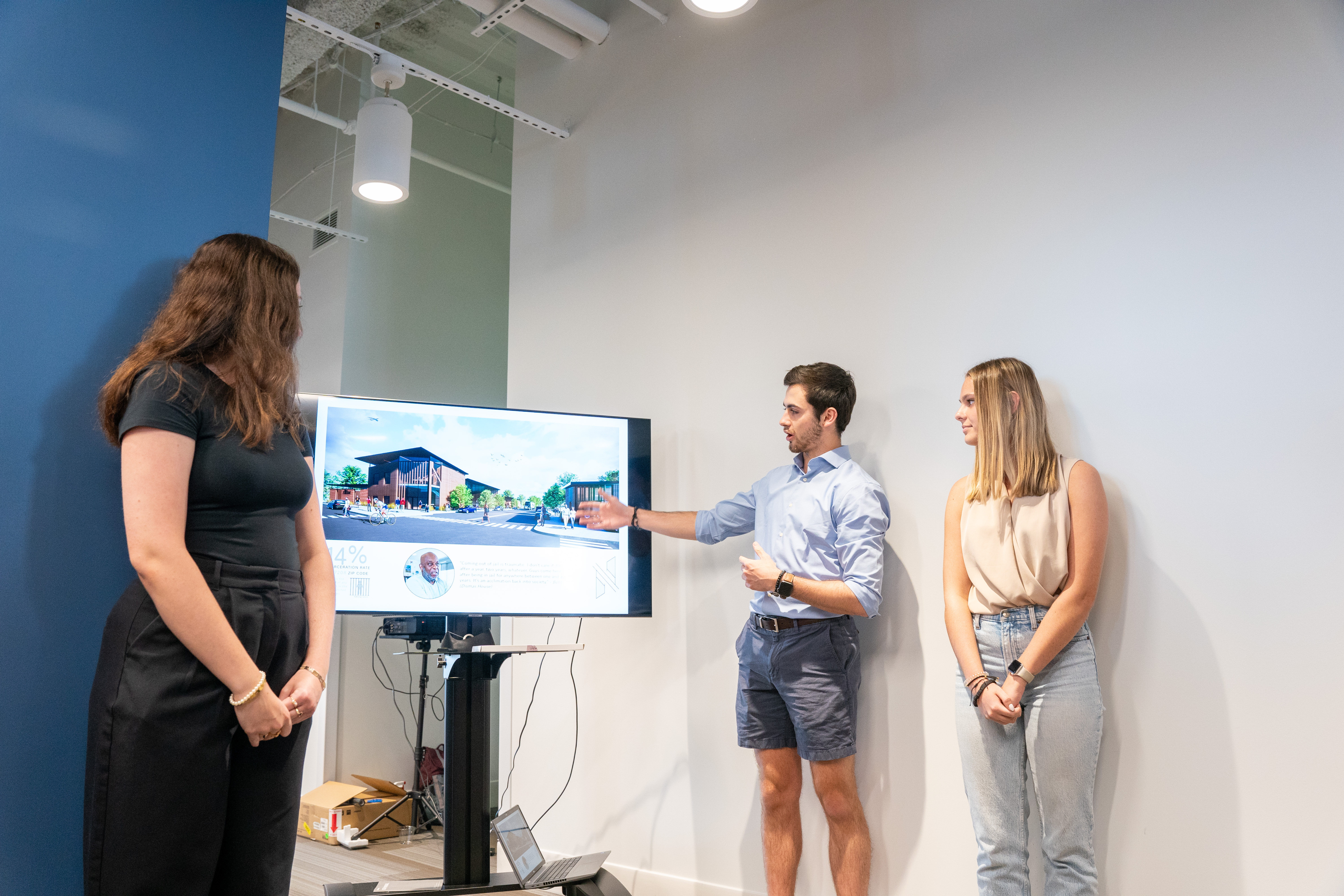
Photo: Sam Simpkins
On April 30, they presented their urban design projects to both the Belmont and broader Nashville communities. University President Dr. Greg Jones and Rev. Susan Jones were in attendance, along with members of North Nashville’s First Community Church, The Store and the Civic Design Center.
“It was an ambitious plan — to shift the conventional format of a design studio by incorporating lectures, research oriented tasks and activities that reduced the time students had working at the desks but enriched their overall experience,” explained Lima at the exhibit presentation.
The site in North Nashville they were tasked with focusing on, owned by First Community Church, a historic African American church in North Nashville, is also home to a new potential building area for a second location of The Store, a nonprofit grocery store founded by Belmont alumnus Brad Paisley and his wife Kimberly Williams-Paisley.
In addition to the main site project, students were also tasked with a competition between groups to design a “Charette Mobile,” a transportable exhibit space created to showcase key elements of the Designing for Blue Zones exhibit, that could also be used for future interdisciplinary exhibits to engage the Nashville community.
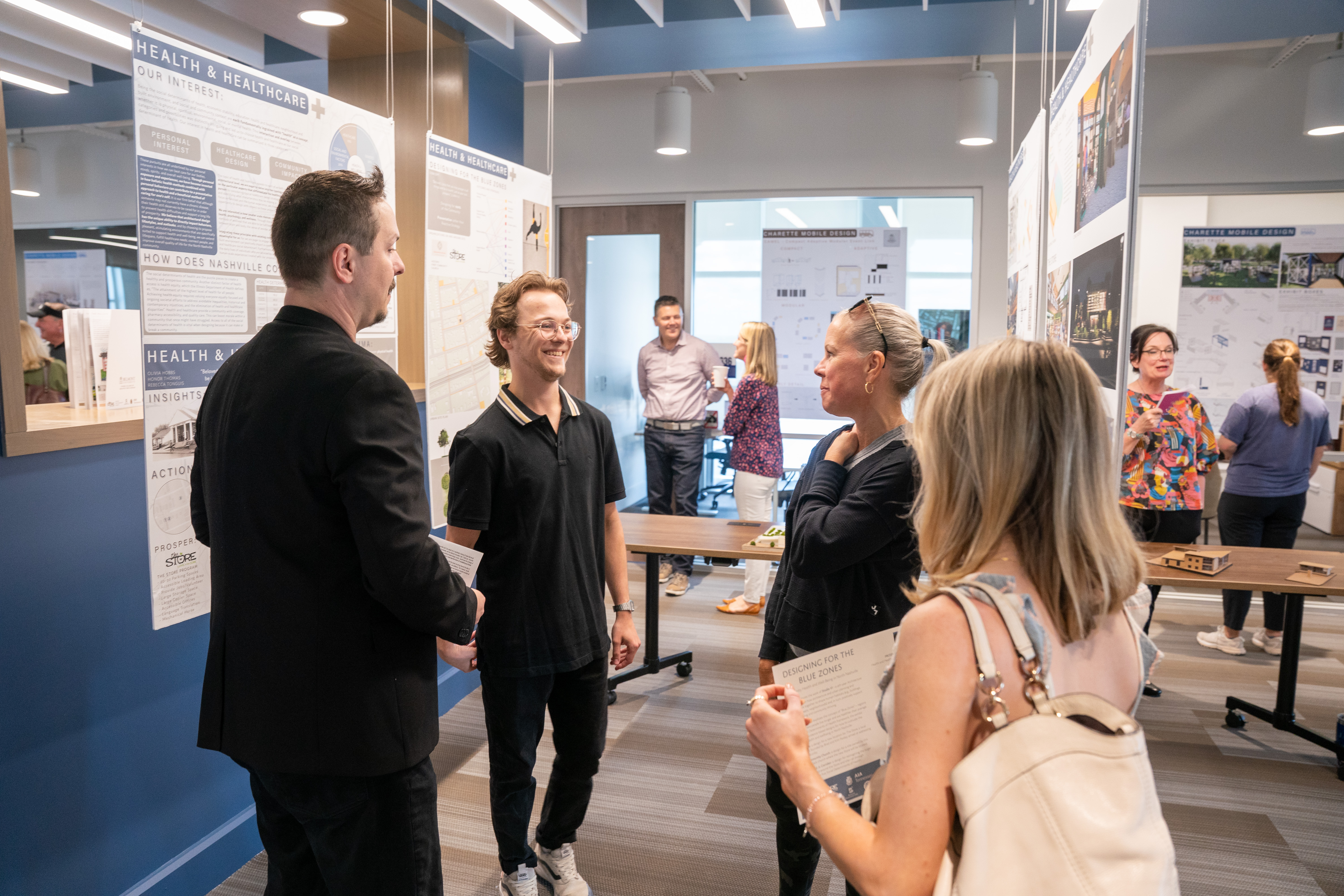
Photo: Sam Simpkins
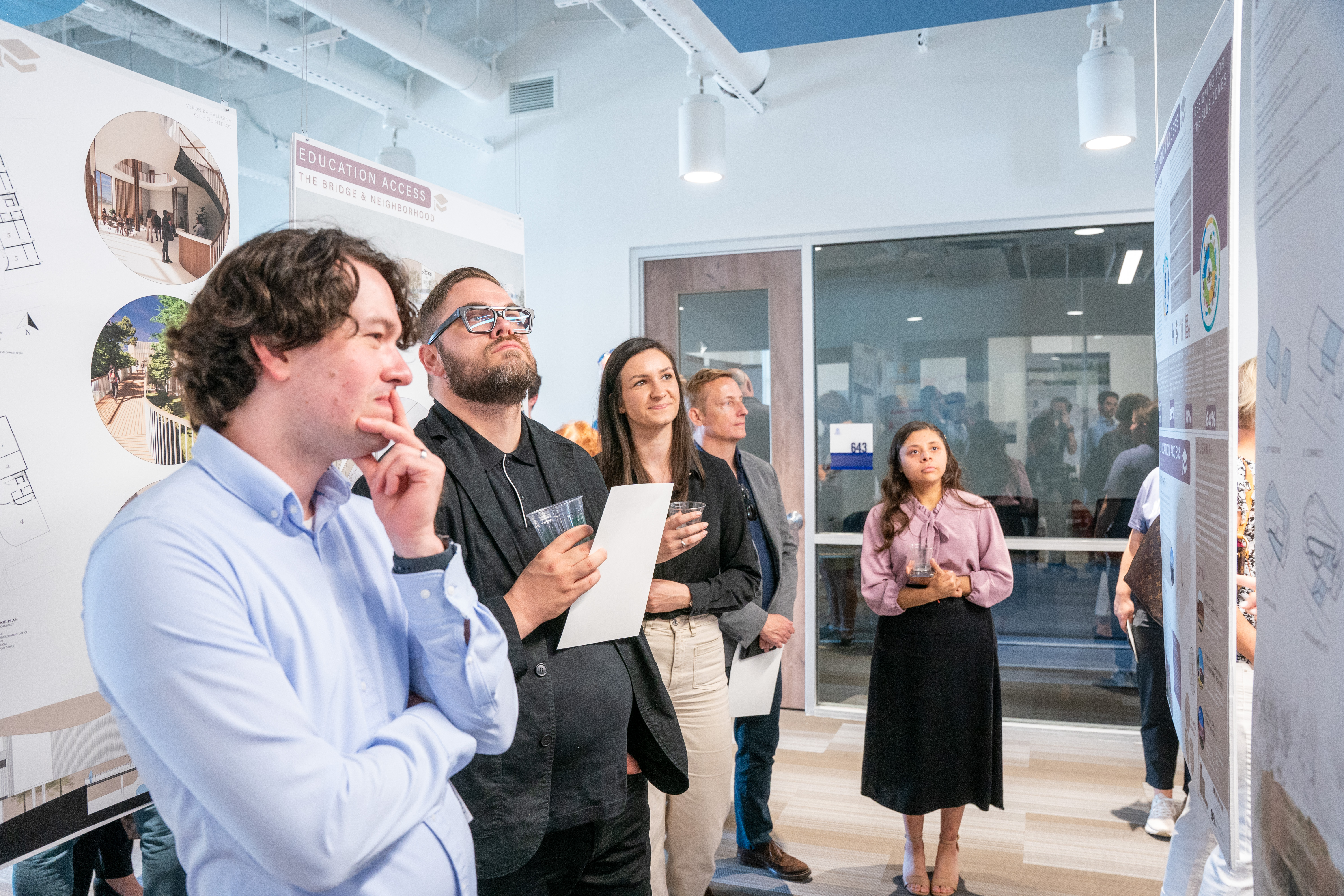 “It's remarkable work, and we’re really proud of what the O’More College of Architecture and Design has done,” said Yates. “It’s not just about designing in a classroom setting, but having design that tackles real world projects. We want this to be a signature of Belmont — who we are and what we do.”
“It's remarkable work, and we’re really proud of what the O’More College of Architecture and Design has done,” said Yates. “It’s not just about designing in a classroom setting, but having design that tackles real world projects. We want this to be a signature of Belmont — who we are and what we do.”
Students Emily Schiedemeyer, Heidi Gabriel and Jason Thomas were chosen as the winners by a jury on the day of the presentations, with their mobile unit bringing together trailers and pods for maximum transportability and cost effectiveness. Their design will be brought to life, guiding the creation of a real mobile exhibit.
The groups’ site designs were also each honored with an award themed around Belmont’s Strategic Pathways:
“Best Data-Informed Design for Social Innovation”
- Students: Emily Schiedemeyer, Heidi Gabriel and Jason Thomas
- Social Determinant: Economic Stability
- Project: The Nexus + The Store — a facility specifically designed to provide social integration programs for both formerly incarcerated individuals and youth, responding to the 37208 zipcode’s 14% incarceration rate, the highest in the United States.
“Best Integrative Design for Achieving Better Health and Well-being for All”
- Students: Honor Thomas, Olivia Hobbs and Rebecca Tonguis
- Social Determinant: Health and Healthcare
- Project: Prosper + The Store — a center where community members can independently utilize permanent health checking and symptom tracking resources, focusing on proactive health measures versus reactive.
“Best Whole Person Formation-Oriented Design”
- Students: Keily Quinteros and Veronika Kalugina
- Social Determinant: Education Access
- Project: The Bridge + The Store — a building that bridges both sides of D. B. Todd. and contains program spaces with necessary resources, available beyond regular school hours and aimed at enhancing the academic, personal and professional welfare of the community.
“Best Design for Reweaving the Social and Urban Fabrics”
- Students: Anthony Fiscu, Brendon Terry and Ryan Plowman
- Social Determinant: Built Environment
- Project: Roots + The Store — an innovative neighborhood with necessary facilities conveniently located within a 15-minute walking distance, encouraging convenience, environmental sustainability, ease of transportation and inclusive housing solutions.
“Best Design Concept to Inspiring the World with Truth, Beauty and Goodness”
- Students: Chase Wilson and Peyton Kauffman
- Social Determinant: Social and Community Context
- Project: The Palate + The Store — an art district for the local neighborhood, cultivating cohesion and an understanding of the positive link between art and mental health, as well as allowing the community to “delve into their collective palates and palettes.”
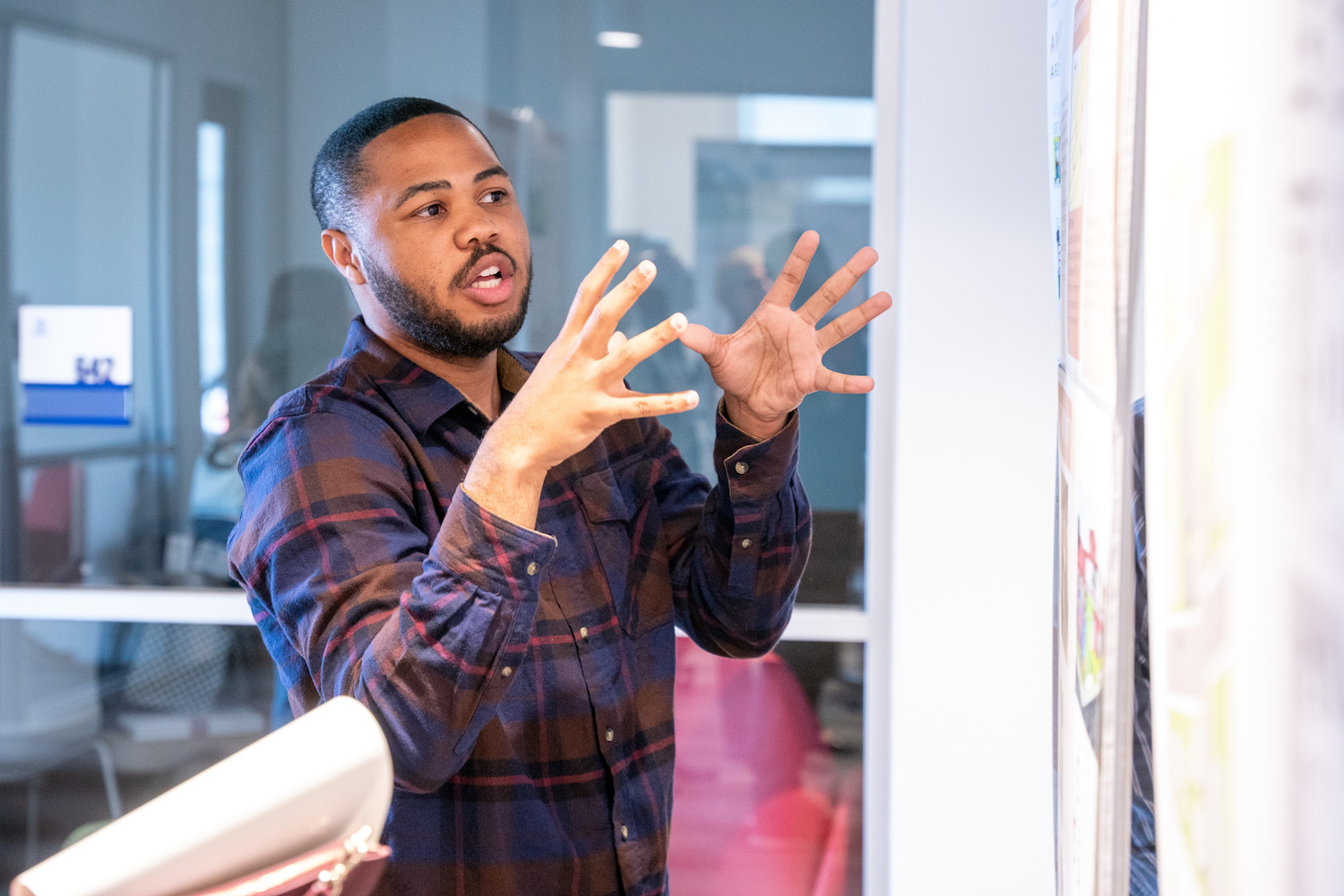
“My favorite part about the project was the research. Being able to go into the community, learn from the people that live there and assess their actual needs was so impactful.” – Chase Wilson, 4th year architecture student
Want to get involved in the design community at Belmont?

